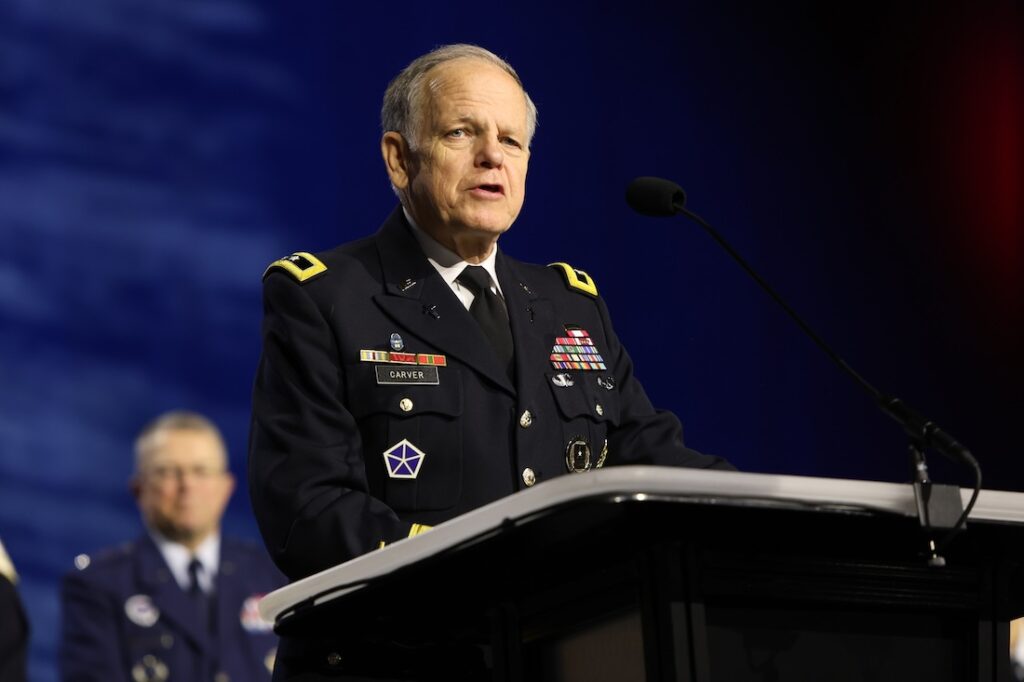In 1969 peace negotiations between the U.S. and North Vietnam officials had stalled largely due to the parties’ conflicting demands. During that year, more than 550,000 members of the United States Armed Services were deployed to combat zones throughout Southeast Asia. As many as 300 American troops a week were being killed in action. Hundreds more were being held as prisoners of war in North Vietnam. Today more than 58,000 names of the men and women inscribed on the black granite walls of the Vietnam Veterans Memorial Wall serve as a visible reminder to the cost of war. About 1,500 names on the wall remain listed as Missing in Action.
The Vietnam War ended fifty years ago on April 30, 1975, with the fall of Saigon to North Vietnamese forces. Two Marines––Corporal Charles McMahon, 21, and Lance Corporal Darwin Lee Judge, 19––were the last two United States servicemen killed in Vietnam during the war. Both Marines were killed in a rocket attack one day before the last U.S. troops left the combat zone back to the United States.
Most people will celebrate November 11 with little thought to the significance of this national holiday. Veterans Day is a time to remember and give thanks for our veterans. In 1926 President Calvin Coolidge issued a Proclamation “inviting the people of the United States to observe November 11 in schools and churches, or other suitable places, with appropriate ceremonies of friendly relations with all other peoples.”
Historically, November 11 was called Armistice Day, marking the temporary cessation of hostilities (“armistice”) between the U.S. and her Allied parters with Germany in 1918 at the “eleventh hour of the eleventh day of the eleventh month.” In 1938 President Franklin D. Roosevelt made November 11 a legal holiday, declaring it Armistice Day. After World War II and the Korean War, President Eisenhower changed the name to Veterans Day in 1954 to honor all U.S. veterans.
On Veterans Day, we honor the heroism, sacrifice, and willingness of brave men and women who have worn the nation’s cloth in the past, and those who wear it today. Their military service comes at a great personal cost. Our troops choose grueling and frequent road marches on hot sunny days and brutally cold nights. They choose difficult, physically demanding challenges and dangerous military training. They choose frequent geographical moves and painful goodbyes to family and friends. They choose the risk of readiness alerts, the risk of war, and the risk of death. And, for the most part, they choose to do it freely and gladly because they responded to a higher calling, to preserve our freedom and that of others.
This year’s Veterans Day is particularly notable for several reasons. First, the nation has celebrated the 250thanniversary of the U.S. Army, the U.S. Navy, and U.S. military chaplaincy. How fitting to remember and give thanks for our veterans and chaplains whose legacy was established before the birth of our great nation. Second, Veterans Day this year is also notable because it commemorates the 80th anniversary of the end of World War II, whose veterans were integral in shaping “the greatest generation.” Third, Veterans Day this year marks the 50th anniversary of the end of the Vietnam War. Veterans who served during this long conflict returned to a dismal welcome home from their fellow Americans. And yet, like all veterans returning from war, they found opportunities to contribute to the growth, stability, and future welfare of the nation.
After each war or conflict, our veterans who performed so courageously in harm’s way have always returned to build a stronger nation. Today there are approximately sixteen million American veterans. In war and peace, their contribution to our nation and communities, to our schools and churches, has been invaluable. The archives of U.S. Army Chief of Staff General George C. Marshall include his personal assessment of the impact military service has on the lives of those who wear the uniform. On November 29, 1940, he said, “There should be no fear that any young man will suffer spiritual loss during the period of his military service, and, on the contrary, we hope that the young soldier will return to his home with a keener understanding of the sacred ideals for which our churches stand.”
We can never truly repay our debt to our veterans, because it is beyond price. However, we can show our gratitude for the unbroken legacy of freedom they have given to the nation through their blood, sweat, and tears by simply remembering to thank our veterans, pray for them and their families, and by choosing to be good American citizens who maintain “holy conduct and godliness as (we) wait for the day of God and hasten its coming” (2 Peter 3:11-12).
Published November 10, 2025
